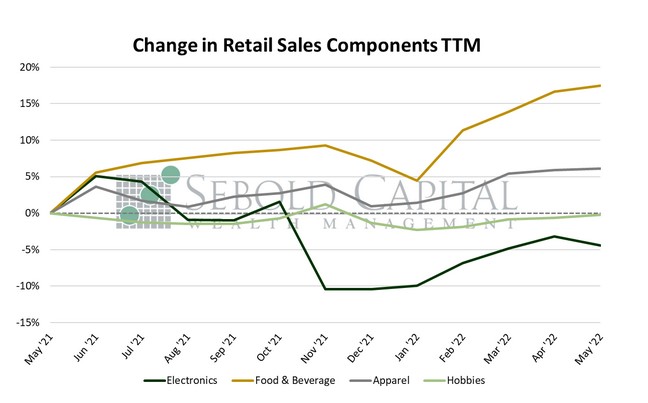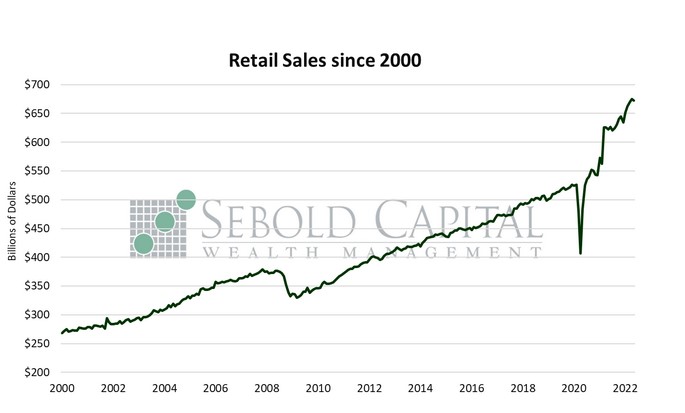 Retail Sales are the total amount of merchandise and related services sold to consumers. It is considered a sign of strength of U.S. Consumer spending, which accounts for roughly two-thirds of the economy. This indicator also provides insight into which areas of the retail space are experiencing strong sales.
Retail Sales are the total amount of merchandise and related services sold to consumers. It is considered a sign of strength of U.S. Consumer spending, which accounts for roughly two-thirds of the economy. This indicator also provides insight into which areas of the retail space are experiencing strong sales.
In May, retail sales fell by 0.27% to $672.9 billion, missing market forecasts of a 0.3% advance. April’s print was also revised to the downside, from 0.9% to 0.7%. Despite the decline, three out of the four broad categories that make up the report posted modest advances. Sales at bars and restaurants rose by 0.7% to $85.0 billion. Spending at sporting goods and hobby stores increased by 0.4% to $9.1 billion. Sales of clothing and apparel remained nearly unchanged, increasing by 0.1% to $26.3 billion. However, sales at electronics and appliance stores declined 1.3% to $7.7 billion.
Consumer spending declined last month, with factors such as rising prices, spotty inventories, and higher borrowing costs dampening the willingness and ability of many to spend. A significant drop in vehicle sales played a key role in the decline in retail spending. Excluding the former, retail sales actually rose by 0.5%. However, excluding sales at gas stations, retail spending fell by 0.7%, indicating that gasoline took up a greater share of consumer spending last month. High prices have also taken a toll on consumer confidence, which could easily translate to lower spending. The Index of Consumer Sentiment, put out by the University of Michigan, recently declined to its lowest point since the index was first released in the 1940’s. If there is going to be an economic slowdown, or perhaps even a recession, it is likely going to be preceded by a significant decline in consumer spending—which is ultimately the main driver of the U.S. economy. It is not unthinkable that a combination of rising prices, higher interest rates, and increasingly pessimistic consumers might cause just that. Economic conditions are obviously evolving continuously, but the picture they are painting is getting a bit smudged. 

June 15, 2022

